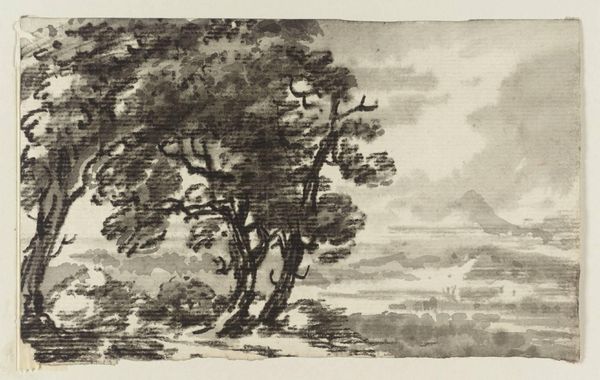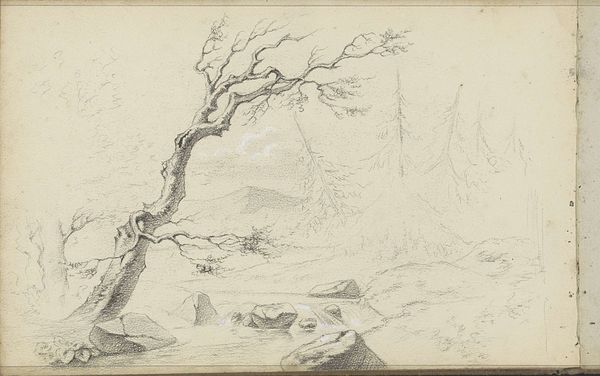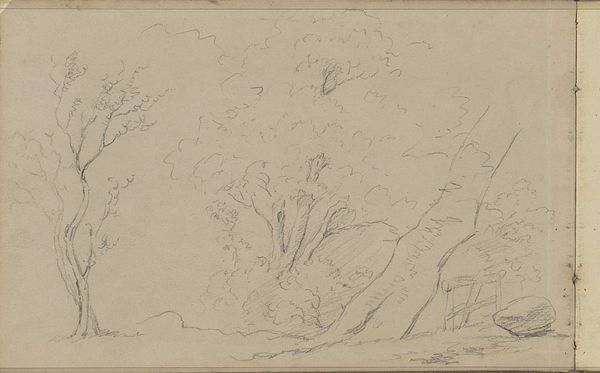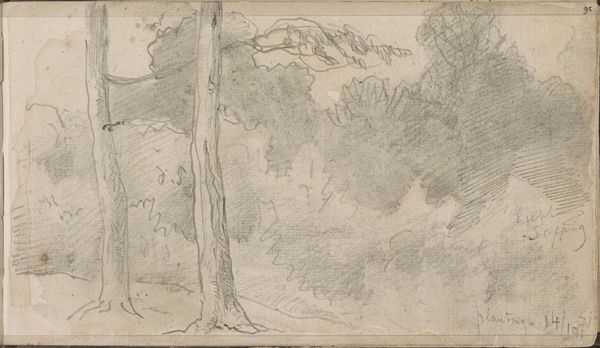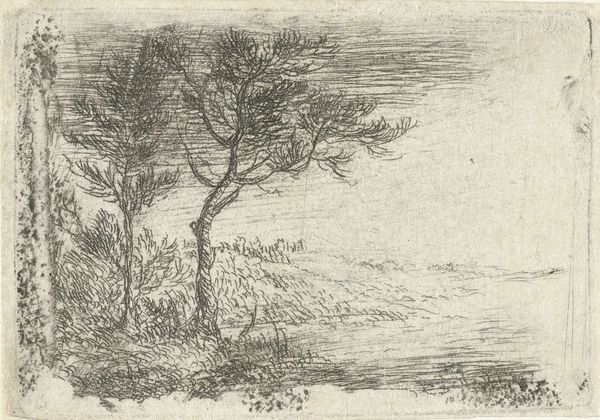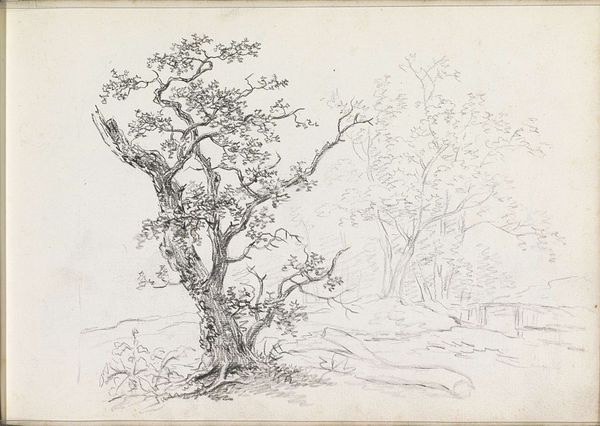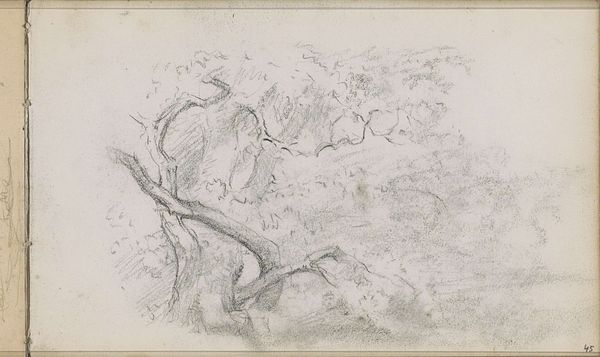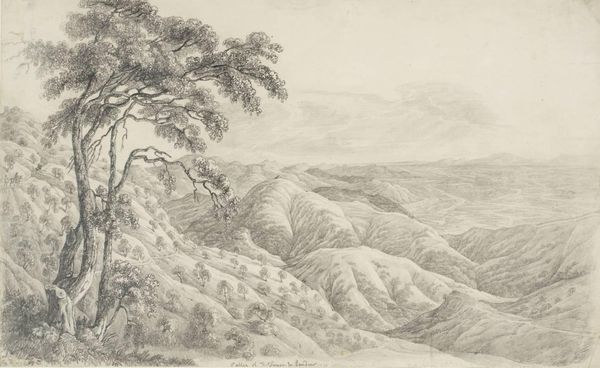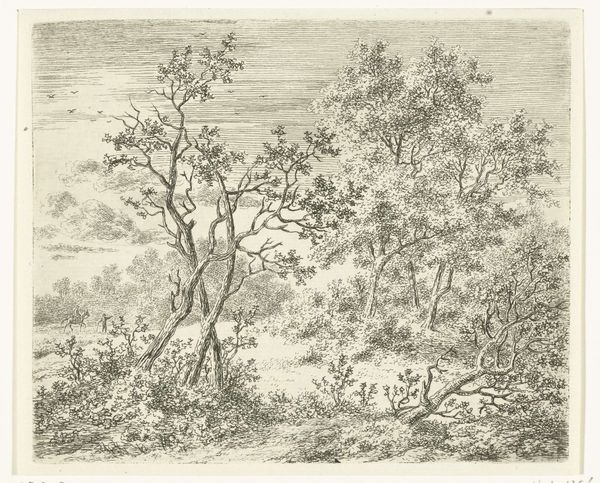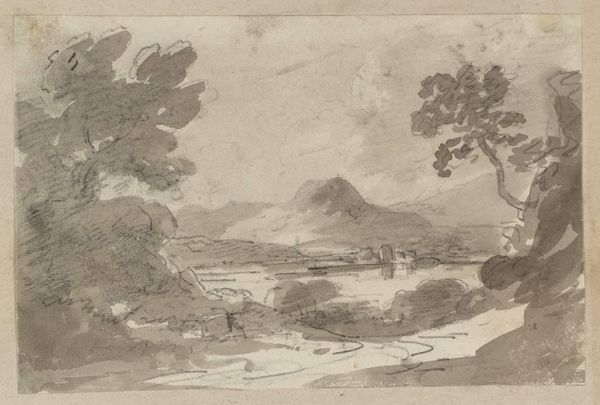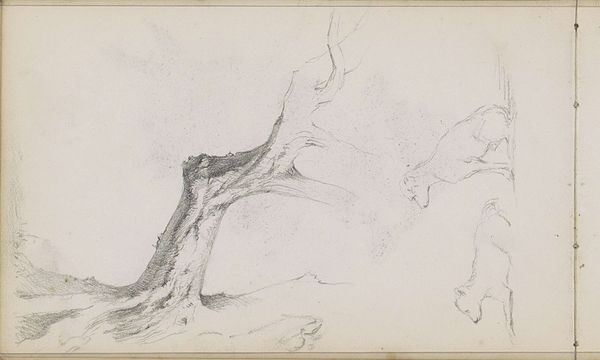
Dimensions: height 39 mm, width 60 mm
Copyright: Rijks Museum: Open Domain
Editor: This drawing, "Landschap met bomengroep" by Maxime Lalanne, dates sometime between 1837 and 1886. It's a pencil drawing, and it evokes such a quiet, contemplative mood. What draws me in is the artist’s attention to the texture of the trees and how they seem to dominate the landscape. How do you interpret this work? Curator: The way Lalanne captures the trees' presence is key, isn't it? Trees in art have long been potent symbols – often representing life, growth, or even the connection between the earthly and the divine. Consider the historical context; in the Romantic era, nature was revered. Do you see echoes of that here? Editor: Definitely. I notice how the landscape is rendered almost ethereally in the background; it gives an incredible depth. Curator: And look at the positioning of the trees. The cluster is slightly off-center, creating a visual weight, a point of focus. Trees were frequently used in classical painting to frame, structure, and highlight a significant object, theme, or moment. Editor: So it’s less about just the landscape and more about imbuing these trees with…meaning? Curator: Precisely! Think of these towering forms as silent witnesses. Do you think Lalanne may be invoking something about our relationship with nature or time, perhaps? The tree is one of the primordial symbols that is deeply imprinted within our shared memory. Editor: That is true! Seeing the drawing from the viewpoint of its symbolic power and relationship to art history and Romanticism has changed my understanding and appreciation of it. Curator: Mine as well! It's amazing how something as seemingly simple as a tree can carry so much cultural and historical weight.
Comments
No comments
Be the first to comment and join the conversation on the ultimate creative platform.
